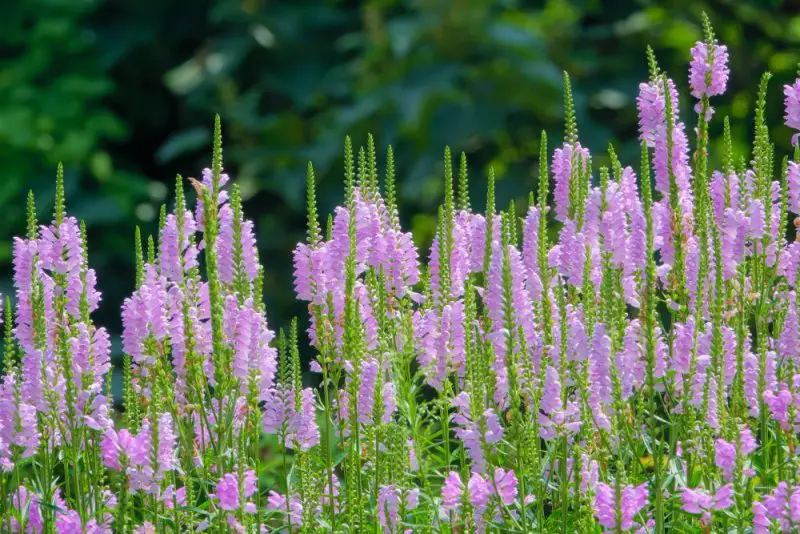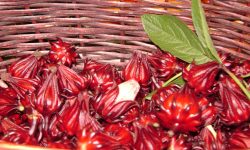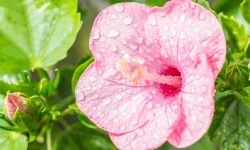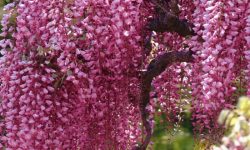The obedient plant (Physostegia virginiana) is a captivating perennial that brings both beauty and intrigue to every garden. Named for its unique trait of holding blossoms in place when gently moved, it adds a touch of wonder to borders, meadows, and pollinator-friendly landscapes. With tall spikes of pink, purple, or white blooms that appear in late summer, this resilient native flower brightens outdoor spaces just when many gardens begin to fade.
Caring for the obedient plant is a rewarding journey that combines simple steps with thoughtful management. From choosing the right location and preparing soil to watering, pruning, and controlling its vigorous spread, success lies in balancing its energy with its charm. By learning the secrets of proper care, you can enjoy thriving, pollinator-attracting displays that bring lasting beauty and seasonal joy year after year.
Understanding About Obedient Plant

The obedient plant, known scientifically as Physostegia virginiana, is a perennial native to North America that has long fascinated gardeners with its distinctive traits. Its name comes from the unusual quality of its tubular flowers, which can be gently moved and will remain in place, almost as if “obedient” to human touch. Beyond this charming feature, the plant is admired for its tall spikes of blossoms that bloom in shades of pink, purple, or white during late summer and early fall, creating vibrant displays when many other flowers have begun to fade.
In its natural habitat, the obedient plant thrives in moist meadows, along riverbanks, and in open woodlands, which explains its preference for sunny conditions and consistently damp yet well-draining soil. It grows from rhizomes, underground stems that spread quickly, allowing the plant to form dense colonies. This vigorous growth habit makes it both a reliable ground cover and a plant that requires some degree of management to prevent it from overtaking more delicate species in the garden. Its resilience, adaptability, and low-maintenance qualities make it especially appealing to both beginner and experienced gardeners.
Aside from its visual appeal, the obedient plant plays an ecological role by attracting bees, butterflies, and hummingbirds with its nectar-rich flowers. This pollinator-friendly characteristic makes it an excellent choice for wildlife gardens or for gardeners who wish to support biodiversity in their landscapes. Understanding its growth pattern, habitat preferences, and ecological benefits is essential before planting. By learning these basics, gardeners can appreciate not only its beauty but also its contribution to creating a sustainable and balanced garden environment.
History and Origin of Obedient Plant
The obedient plant (Physostegia virginiana) has a rich history rooted in the landscapes of North America, where it grows naturally in meadows, prairies, and wetlands. Indigenous peoples were among the first to recognize its presence, valuing it not only for its ornamental appeal but also for its role in supporting local ecosystems. Over time, as European settlers expanded across the continent, the plant began to appear in cultivated gardens, appreciated for its striking spikes of flowers and unusual “obedient” feature. Its adaptability and resilience quickly made it a favorite in both formal and informal landscapes.
Botanically, the obedient plant belongs to the mint family (Lamiaceae), which includes many aromatic and spreading species. This connection explains its square stems, rapid growth habit, and rhizomatous root system. Its native distribution stretches from Canada through much of the eastern and central United States, thriving in regions where moist soils and sunny conditions dominate. Because it naturally colonizes riverbanks and open spaces, the plant was well suited to become a garden staple when people began experimenting with wildflowers in home landscapes during the 19th and 20th centuries.
Today, the obedient plant is celebrated both in native plant gardens and in cultivated flower beds around the world. Gardeners appreciate not only its showy appearance but also its ecological value, as it attracts pollinators and contributes to biodiversity. The history of this perennial reflects the growing awareness of native species in horticulture and the shift toward sustainable gardening practices. By understanding its origins and cultural significance, gardeners can connect more deeply with the obedient plant and appreciate its role as both a decorative and ecologically important species.
Different Varieties of Obedient Plant
Although the species Physostegia virginiana is widely known, several cultivated varieties have been developed to suit different garden needs and preferences. These varieties differ in flower color, growth habit, and size, giving gardeners flexibility when designing landscapes. Some are compact and well-behaved, while others retain the vigorous spreading nature of the original species. Choosing the right variety depends on the space available and the desired visual impact.
One of the most popular cultivars is ‘Miss Manners,’ a white-flowered variety that is notably less aggressive than its wild counterpart. Its more controlled growth makes it ideal for smaller gardens or border plantings where spreading must be limited. Another attractive choice is ‘Summer Snow,’ which also features pristine white blossoms and a more compact form. Gardeners seeking vibrant color often turn to ‘Vivid,’ known for its bright pink-purple flowers that stand out in any summer display.
These cultivated varieties maintain the charm of the obedient plant while addressing some of the challenges associated with its invasive tendencies. By selecting specific cultivars, gardeners can enjoy long-lasting blooms, strong stems, and manageable growth. Whether you prefer the bold color of ‘Vivid’ or the refined appearance of ‘Miss Manners,’ each variety contributes unique beauty while still attracting pollinators. Exploring these options allows you to match the obedient plant’s qualities with your garden’s style, ensuring harmony and elegance throughout the growing season.
Choosing the Right Location for Obedient Plant
Location plays a crucial role in how well your obedient plant will thrive. These perennials prefer areas where they receive full sun for most of the day, though they can tolerate light shade in hotter climates. A sunny location ensures abundant blooms, while partial shade may result in fewer flowers but still maintain healthy foliage. Selecting the right exposure is the first step to creating a vibrant display.
Soil conditions are equally important when deciding where to plant. Obedient plants prefer moist, well-draining soil but are adaptable enough to grow in clay or loam if proper amendments are made. They naturally thrive in riverbanks and meadows, so recreating those conditions with rich organic matter can make a big difference. Avoid overly dry or compacted soils, as they hinder root expansion and reduce flowering.
Another key factor is space. Obedient plants spread quickly through underground rhizomes, so consider an area where they have room to grow or install root barriers to contain them. Garden borders, wildflower gardens, or near water features are excellent options. By carefully selecting the right location, you not only provide ideal growing conditions but also set boundaries that help manage this plant’s vigorous nature.
Soil Preparation and Requirements
Healthy soil forms the foundation for a thriving obedient plant. These perennials prefer soil that stays consistently moist yet drains well to prevent root rot. To achieve this, incorporating organic compost, peat moss, or leaf mold into the planting site can improve texture and retain essential nutrients. Amending heavy clay or sandy soils helps create the balanced conditions that encourage strong growth.
Testing your soil’s pH before planting is also recommended. Obedient plants grow best in neutral to slightly acidic soil, usually within a range of 6.0 to 7.0. If your soil is too alkaline, adding organic matter or elemental sulfur can help adjust it. For overly acidic conditions, a small application of lime can bring the pH closer to optimal levels. Maintaining this balance ensures nutrient availability for robust root and flower development.
Mulching around the plant with shredded bark or straw further enhances soil health. Mulch conserves moisture, regulates soil temperature, and suppresses weeds, all of which support healthier plants. With the right soil preparation, you create a nutrient-rich, moisture-stable environment where obedient plants can establish strong roots and produce abundant flowers. This careful groundwork pays off in years of low-maintenance beauty.
Watering Needs of Obedient Plant
Watering is one of the most important aspects of obedient plant care, particularly during the establishment phase. Newly planted specimens require consistent moisture to develop strong roots, so watering deeply once or twice a week is often necessary depending on local rainfall. Shallow, frequent watering should be avoided, as it encourages weak root systems and makes the plant less drought-tolerant in the long term.
Once established, obedient plants are relatively adaptable and can withstand short periods of drought. However, they perform best when provided with regular water during dry spells, especially in midsummer when blooming begins. Consistent moisture not only supports lush foliage but also prolongs the flowering season. Monitoring the soil and ensuring it remains evenly moist without becoming waterlogged is key to balanced growth.
Drip irrigation or soaker hoses work well for maintaining proper soil moisture while reducing the risk of fungal diseases. Watering early in the day allows foliage to dry quickly, minimizing potential issues. By learning to provide the right amount of water at the right time, you encourage your obedient plants to flourish while ensuring that the display remains colorful and vibrant.
Fertilizing for Optimal Growth
Obedient plants are not heavy feeders, but periodic fertilization helps maximize their growth and flowering potential. A balanced, slow-release fertilizer applied in spring provides essential nutrients that promote strong stems and abundant blooms. Choosing a fertilizer with equal ratios of nitrogen, phosphorus, and potassium ensures that plants receive well-rounded nourishment without overstimulation.
For gardeners who prefer organic methods, compost and well-rotted manure work effectively to enrich soil naturally. These amendments release nutrients slowly while improving soil structure and water retention. A mid-season boost with liquid fish emulsion or seaweed extract can also rejuvenate plants during their flowering peak. The key is moderation, as over-fertilizing may encourage excessive foliage growth at the expense of flowers.
Regular soil improvement through organic matter is often enough to sustain obedient plants, especially in fertile gardens. By supplementing thoughtfully, you create an environment where plants can produce healthy foliage and striking blossoms. Fertilization, when done correctly, ensures your obedient plant becomes a focal point in your garden without requiring constant attention.
Sunlight Requirements
Obedient plants flourish in areas where they receive at least six hours of direct sunlight each day. Full sun exposure stimulates vigorous flowering, producing dense spikes of blossoms that create a stunning summer display. In cooler regions, maximum sunlight ensures plants reach their full potential, while in warmer climates, some afternoon shade can protect against excessive heat stress.
Shade tolerance is possible, but results are often less impressive. In partially shaded areas, obedient plants may produce fewer flowers and grow lankier stems that require staking. To maintain their characteristic upright form, prioritize locations with abundant light. Observation of your garden’s sunlight patterns can help determine the best spot to place them.
Proper light exposure also plays a role in plant health. Sunlight encourages sturdy growth and improves resistance to diseases. When plants receive the light they need, they develop strong stems that hold flowers upright, preventing flopping or crowding. By ensuring adequate sunlight, you set the stage for a vibrant and long-lasting display of obedient plant blooms.
Pruning and Deadheading
Pruning obedient plants is essential to maintain their beauty and manage their vigorous growth. After the blooming season, cutting back flower stalks encourages a neater appearance and prevents unwanted self-seeding. Deadheading spent blooms during summer not only tidies the plant but may also trigger additional flowers, extending the season of color in your garden.
In late autumn, once foliage dies back naturally, cutting stems down to ground level prepares the plant for winter. This reduces the risk of disease and makes space for fresh growth in spring. In areas with mild winters, leaving stems standing can provide habitat for beneficial insects, but trimming remains advisable for well-kept gardens.
Thinning out crowded patches every few years ensures healthy airflow and reduces susceptibility to fungal issues. Pruning also helps control the spread of rhizomes, keeping the plant from overtaking nearby flowers. With consistent maintenance, obedient plants retain their structure and contribute lasting elegance to any garden design.
Controlling the Spread of Obedient Plant
While obedient plants are admired for their beauty, their aggressive spreading habit can be a challenge. These perennials propagate through underground rhizomes, quickly colonizing garden beds if left unchecked. Without intervention, they may crowd out neighboring plants, disrupting garden balance. Recognizing this growth tendency is the first step to effective management.
Installing root barriers at planting time helps contain rhizomes and limits uncontrolled spread. Raised beds, edging, or deep garden borders also provide natural boundaries. Regular division every few years not only prevents overcrowding but also rejuvenates plant vigor. By monitoring and adjusting their growth, you can enjoy their charm without worrying about invasiveness.
Selective placement is another strategy. Planting obedient plants in areas where spreading is desired, such as wildflower gardens or naturalized meadows, allows them to grow freely without restrictions. Controlling their spread is about balance—embracing their enthusiastic growth while guiding it to maintain a harmonious garden.
Propagation Methods
Propagation is an excellent way to expand your obedient plant collection or share it with fellow gardeners. The most common and effective method is division, typically performed in spring or fall. Digging up established clumps and separating rhizomes allows you to create new plants while rejuvenating the original. Each division should have strong roots and healthy shoots to ensure successful establishment.
Another propagation option is cuttings. Taking stem cuttings in early summer and rooting them in moist, well-draining soil can yield new plants, though this method requires more patience and care. Some gardeners also allow plants to self-seed, but this approach is less predictable and may lead to unplanned spread. Controlled methods like division provide more reliable results.
By choosing the right propagation method, you can multiply your obedient plants while maintaining healthy, attractive growth in your garden. Propagation not only increases your stock but also allows you to manage their natural vigor effectively.
Pests and Diseases
Obedient plants are generally hardy and resistant to many common garden pests, making them relatively low-maintenance. However, they are not entirely immune. Aphids and spider mites occasionally appear, especially in hot and dry weather. These insects feed on plant sap, causing yellowing leaves and stunted growth. A strong jet of water or natural insecticidal soap usually controls these problems effectively.
Diseases are less frequent but can still occur. Powdery mildew may develop in crowded or shaded areas with poor air circulation, covering leaves in a white powdery film. Root rot is another potential issue if the soil remains waterlogged. Preventing these diseases involves proper spacing, pruning, and watering practices to keep conditions balanced.
Maintaining overall plant health is the best defense. Healthy, well-cared-for obedient plants are more resilient against pests and diseases. With vigilance and proactive care, your garden can remain vibrant and relatively trouble-free.
Seasonal Care Guide
Spring Care
Spring is the season when obedient plants awaken and begin new growth, making it the perfect time to prepare them for the year ahead. Start by clearing away any dead stems left from the previous season to allow fresh shoots to emerge without competition. Adding a layer of compost or balanced fertilizer at this stage provides nutrients that fuel strong roots and vibrant foliage. Mulching around the base of the plant helps retain moisture and keeps weeds from competing with young growth.
This is also the ideal time for dividing crowded clumps. Dividing not only prevents invasive spread but also reinvigorates plants, ensuring healthier blooms in summer. Replant divisions in fresh soil or share them with other gardeners to expand the beauty of obedient plants. Paying close attention during spring sets the foundation for a healthy growing season, ensuring robust plants that will thrive in the warmer months ahead.
Summer Care
During summer, obedient plants enter their most vigorous growth and bloom, producing tall spikes of colorful flowers. Regular watering is crucial in dry periods, but be cautious not to overwater, as they dislike soggy soil. Mulching helps conserve moisture and keeps the soil cooler, creating a stable environment for roots. Deadheading faded flowers encourages extended blooming and keeps the plant looking neat throughout the season.
Summer is also the time when the plant’s spreading habit becomes noticeable. Monitor its growth carefully, cutting back stems or trimming away unwanted rhizomes before they overtake neighboring plants. Adding supports for taller stems may prevent flopping in windy conditions. By maintaining steady care, you can maximize both the beauty and ecological benefits of obedient plants during their most colorful display.
Fall Care
As fall arrives, obedient plants continue to provide late-season color, but their growth begins to slow. Continue removing spent blooms to reduce self-seeding and to channel energy back into the root system. Watering should be adjusted as cooler, wetter weather sets in, ensuring that soil remains moist but not waterlogged. Adding a thin layer of compost or mulch prepares the plant for winter by enriching the soil and protecting roots from temperature fluctuations.
This is also a good season to divide or relocate plants if needed. Moving them in fall allows roots to settle before winter dormancy. Regular trimming of older stems helps reduce disease risks and keeps the garden tidy. With thoughtful fall care, obedient plants will store enough energy to return even stronger and more vibrant in the following spring.
Winter Care
In winter, obedient plants enter dormancy, conserving energy for the growing season ahead. At this time, cut stems back to the ground after the first frost to prevent pests and diseases from overwintering. Apply a thick layer of mulch or leaves around the root zone, especially in colder regions, to insulate the crown and protect against harsh temperatures. This layer acts as a blanket, ensuring the plant survives the winter safely.
For gardeners in mild climates, minimal intervention may be needed, but maintaining mulch coverage is always beneficial. Winter is also the perfect time to plan next season’s maintenance, such as where divisions will be placed or how spreading will be managed. By safeguarding plants during their rest period, you set the stage for healthy regrowth and another year of beautiful, obedient blooms.
Landscaping Ideas with Obedient Plant
The obedient plant’s vertical flower spikes make it a versatile addition to many garden styles. In cottage gardens, they provide structure and contrast to softer, mounding perennials. Their upright form adds height and visual interest without overwhelming the overall design. Combining them with plants like coneflowers and black-eyed Susans creates a harmonious native garden display.
In modern landscapes, obedient plants can be used in borders or as background plantings where their height enhances layering. Their long blooming season ensures consistent color during late summer, bridging the gap between spring and autumn flowers. Planting them near patios or walkways also allows visitors to appreciate their unique floral behavior up close.
Because they attract pollinators, obedient plants are perfect for wildlife gardens. Bees, butterflies, and hummingbirds flock to their nectar-rich blooms, supporting local ecosystems. Whether used in formal or naturalistic settings, obedient plants bring both beauty and ecological value to any landscape.
Benefits of Growing Obedient Plant
The obedient plant brings remarkable aesthetic value to any garden with its upright spikes of colorful blossoms that bloom when many summer flowers fade. Their shades of pink, purple, and white create striking borders, cottage-style gardens, or naturalized landscapes. The plant’s unusual “obedient” trait, where flowers remain in place when repositioned, adds an element of novelty and delight for gardeners and visitors alike. With its tall, graceful stems, the obedient plant provides vertical interest, soft movement in the breeze, and a reliable late-season show of color.
From an ecological perspective, obedient plants are an excellent choice for supporting biodiversity. The tubular flowers are magnets for hummingbirds, bees, and butterflies, offering nectar at a time when pollinators need resources to prepare for migration or winter. Adding obedient plants to your garden not only beautifies the space but also contributes to the health of local ecosystems by creating a haven for beneficial wildlife.
Another key benefit is the plant’s adaptability and resilience. Obedient plants thrive in a range of soils, tolerate both full sun and partial shade, and return year after year with minimal care. Their spreading habit can fill large spaces quickly, making them ideal for erosion control or naturalized plantings. When managed properly, they provide a lasting balance of beauty, ecological function, and durability, ensuring that your garden remains vibrant and sustainable season after season.
Companion Plants for Obedient Plant
Pairing the obedient plant with the right companions enhances both its beauty and the overall design of your garden. Since it produces tall spikes of colorful flowers in late summer, it works best alongside plants that either complement its vertical form or provide continuous color throughout the growing season. The goal is to create balance, texture, and seasonal interest that keeps your garden visually engaging.
Coneflowers and black-eyed Susans are classic companions that match the obedient plant’s native origins and attract similar pollinators. Their bold, daisy-like flowers contrast beautifully with the upright spires of obedient blooms, creating a dynamic yet harmonious scene. Grasses such as switchgrass or little bluestem also pair well, adding movement and texture that soften the obedient plant’s strong vertical lines while highlighting its natural charm.
For gardeners who prefer a softer palette, phlox, asters, and bee balm are excellent choices. These plants extend the flowering season and provide a succession of color that keeps the garden lively from midsummer into fall. Their overlapping bloom times ensure that pollinators always have a food source, strengthening the ecological value of your space. Thoughtful companion planting not only enhances aesthetics but also creates a thriving, balanced environment where the obedient plant can shine without overwhelming its neighbors.
Mistakes to Avoid and How to Solve
Overwatering and Poor Drainage
A frequent issue with obedient plant care is overwatering or planting them in soil that drains poorly. These plants dislike standing water, and constant saturation leads to root rot, a disease that damages the roots and weakens overall growth. Yellowing leaves are often misinterpreted as drought stress, prompting gardeners to add more water, which only worsens the situation. Left untreated, excessive moisture can cause the plant to decline or die prematurely.
To prevent this, it is essential to check soil moisture before watering and avoid treating symptoms without understanding their cause. Incorporating compost or sand improves soil texture and drainage, while raised beds provide extra protection in heavy clay conditions. Mulching with organic material helps retain balanced moisture while shielding roots from extreme temperature changes. With these practices, gardeners can establish a healthy root system and maintain vigorous plants throughout the growing season.
Neglecting Spread Control
Obedient plants are known for their rapid spread through underground rhizomes, which can quickly overtake neighboring flowers and upset the garden’s balance. Many gardeners are surprised by how aggressively these plants expand, especially when grown in fertile soil with ample water. Without proper management, the plant’s invasive tendencies may overshadow its beauty and reduce space for other ornamentals.
The best solution lies in consistent control measures. Installing underground barriers or planting obedient plants in containers prevents roots from spreading uncontrollably. Dividing mature clumps every few years not only reduces overcrowding but also revitalizes growth. Planting them in designated areas where their vigor is an advantage, such as erosion-prone slopes, also turns a challenge into a benefit. With thoughtful strategies, you can enjoy their charm without compromising the harmony of your garden.
Improper Pruning and Maintenance
One mistake that gardeners often make with obedient plants is neglecting or mistiming pruning. Allowing stems and flowers to fade without trimming not only diminishes the plant’s appearance but also encourages uncontrolled seeding, leading to unwanted spread. If pruning is done too harshly or at the wrong time, it may weaken the plant and reduce its ability to produce healthy blooms the following season. Inconsistent maintenance also makes the plant more susceptible to pests and diseases, as dead or damaged stems can harbor problems.
To solve this, gardeners should prune obedient plants strategically. Deadheading spent flowers promptly keeps the plant tidy and redirects energy toward stronger root and foliage growth. Cutting back stems after flowering helps maintain shape and reduces the risk of self-seeding. At the end of the season, trimming plants to the ground promotes fresh regrowth in spring. By establishing a regular maintenance routine, you can preserve both the beauty and longevity of obedient plants while preventing common issues caused by neglect.
FAQ About Caring for Obedient Plant
When is the best time to plant obedient plant?
The best time to plant obedient plant is in early spring or fall, when soil temperatures are mild and moisture levels are consistent. Planting during these seasons allows roots to establish before summer heat or winter dormancy, ensuring healthier growth and abundant flowering in the following growing cycle.
How do I stop obedient plant from spreading too much?
Obedient plants spread quickly through underground rhizomes, so controlling their growth is important. Installing barriers, planting in containers, or dividing clumps every few years are effective methods. You can also select specific areas, such as wildflower meadows, where their spreading habit enhances natural beauty instead of becoming a challenge.
Do obedient plants attract pollinators?
Yes, obedient plants are highly attractive to pollinators. Their tubular flowers provide nectar for bees, butterflies, and hummingbirds throughout late summer. Planting them alongside other pollinator-friendly species helps create a vibrant habitat that supports biodiversity while also ensuring cross-pollination and more vigorous growth for your entire garden landscape.
Can obedient plants grow in shade?
Obedient plants can tolerate partial shade, but they thrive best in full sun. In shaded locations, plants may grow taller and produce fewer flowers, sometimes requiring staking for support. For maximum blooms and strong stems, place them where they receive at least six hours of direct sunlight each day.
How often should obedient plants be divided?
Dividing obedient plants every three to four years keeps them vigorous and prevents overcrowding. Division not only controls their spreading nature but also rejuvenates older clumps, encouraging fresh growth and more flowers. The best times to divide are in early spring or early fall, when plants experience less stress.
Conclusion
Caring for the obedient plant is both rewarding and inspiring, offering gardeners endless opportunities to enjoy its striking blooms and graceful form. With the right attention to soil, sunlight, water, and pruning, this perennial thrives while adding vibrant color and pollinator-friendly charm to your garden. Though it has a vigorous spreading habit, thoughtful maintenance keeps it balanced and beautiful in any landscape. By embracing its unique character and following practical care steps, you can ensure that the obedient plant becomes a lasting highlight, bringing elegance, biodiversity, and seasonal delight year after year.






